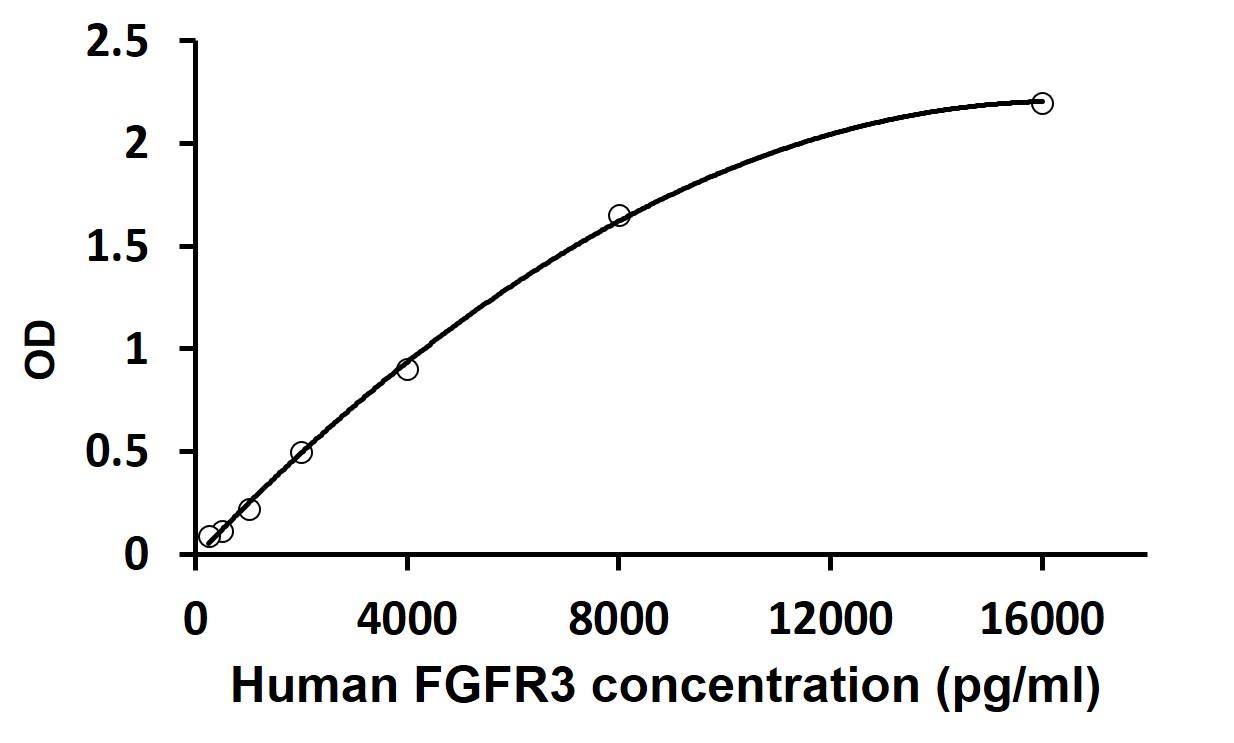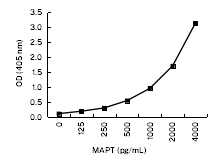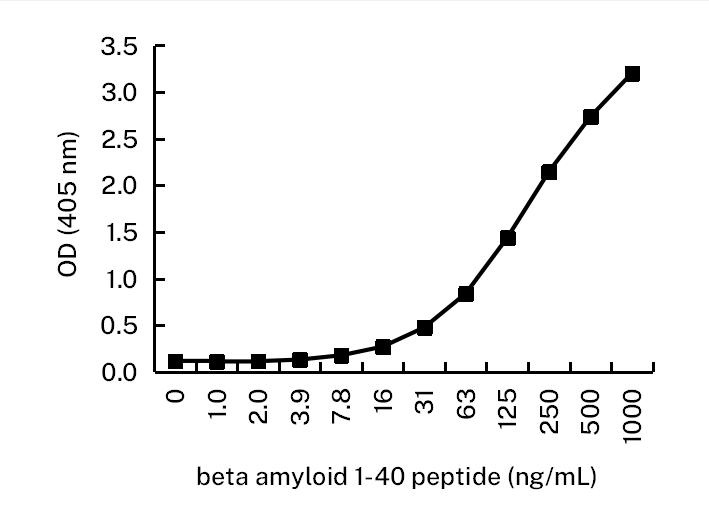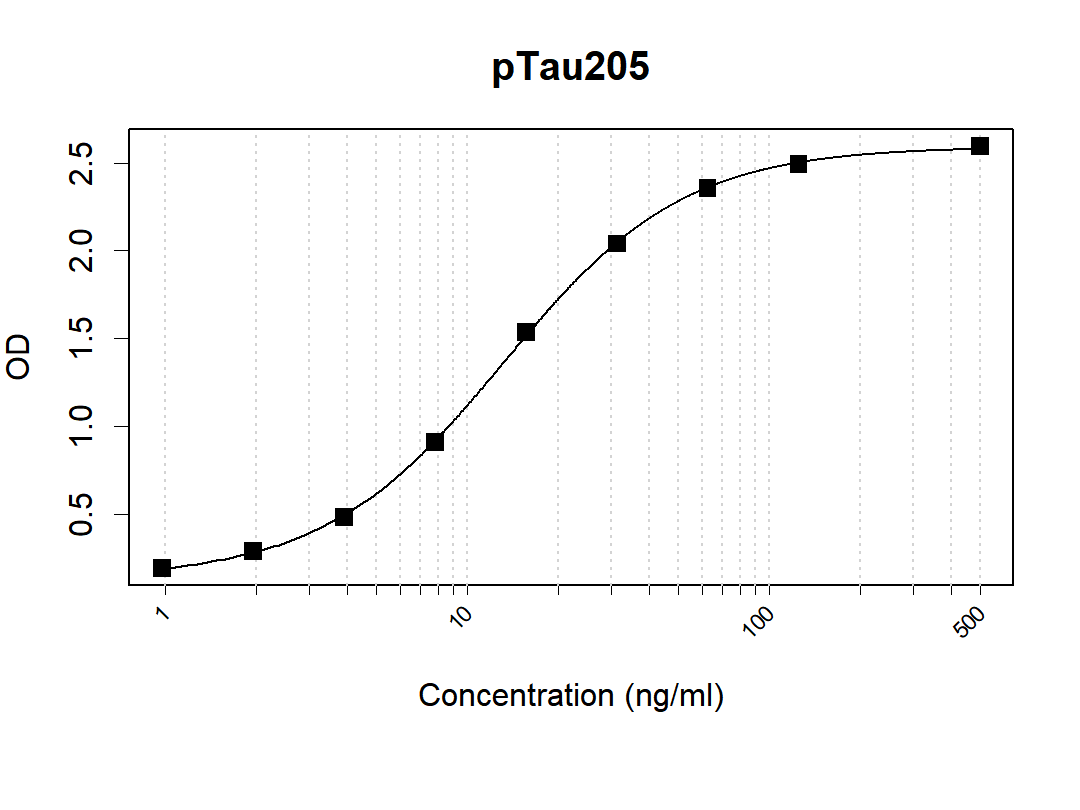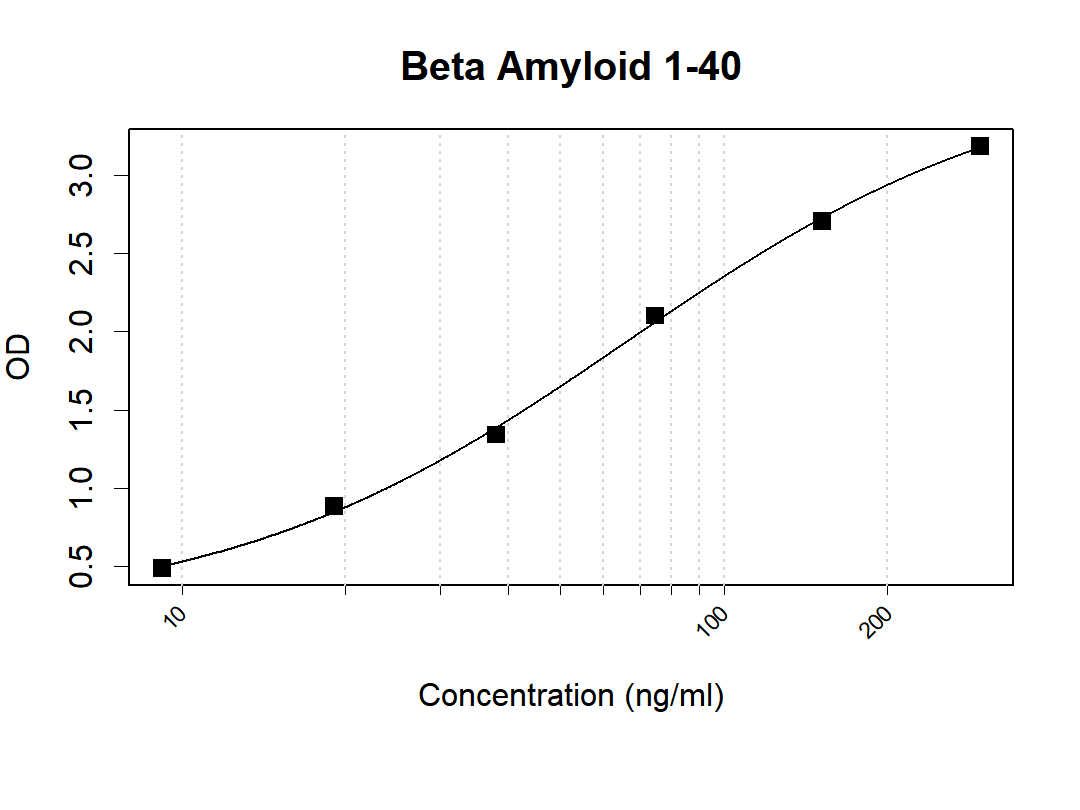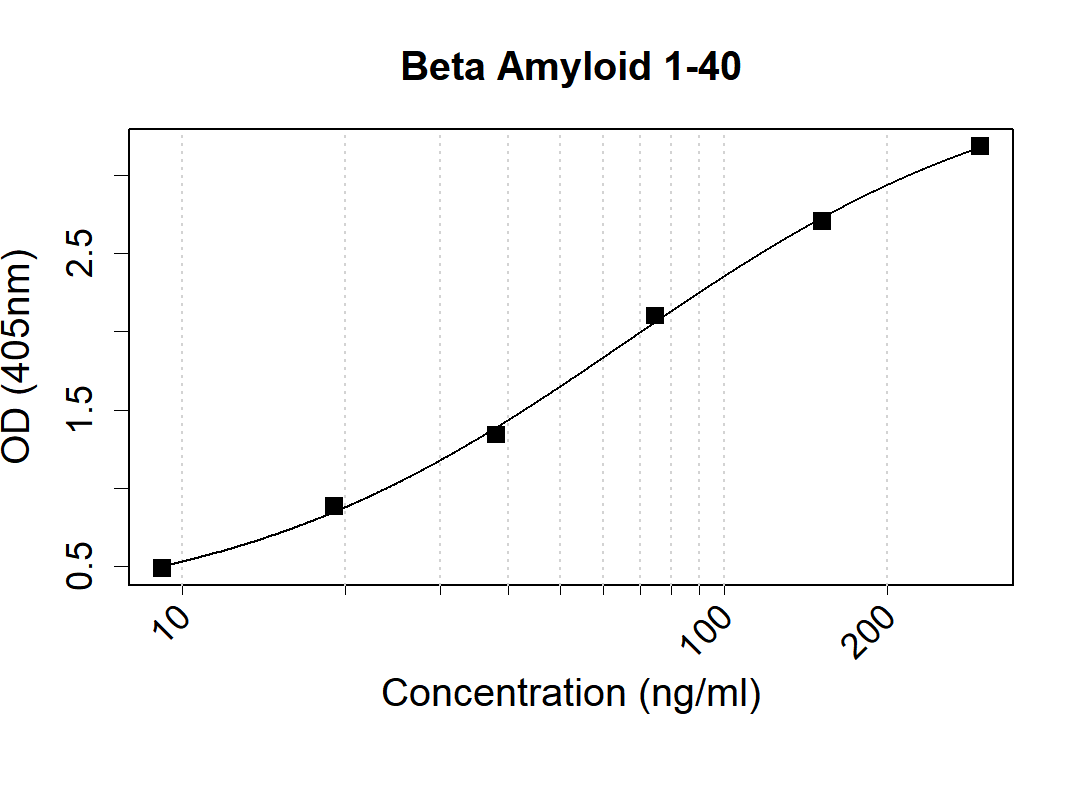Human FGFR3 ELISA Kit
CAT.NO. : ARG82768
US$ Please choose
US$ Please choose
Size:
Trail, Bulk size or Custom requests Please contact us
*产品价格可能会有所调整,请以品牌方官网实时更新的价格为准,以确保准确性。
概述
| 产品描述 | ARG82768 Human FGFR3 ELISA Kit is an Enzyme Immunoassay kit for the quantification of Human FGFR3 in serum, plasma (EDTA, heparin) and cell culture supernatants. |
|---|---|
| 反应物种 | Hu |
| 应用 | ELISA |
| 靶点名称 | FGFR3 |
| 偶联标记 | HRP |
| 偶联标记说明 | Substrate: TMB and read at 450 nm. |
| 灵敏度 | 125 pg/ml |
| 样品类型 | Serum, plasma (EDTA, heparin) and cell culture supernatants. |
| 标准范围 | 250 - 16000 pg/ml |
| 样本量 | 100 µl |
| 別名 | CEK2; CD antigen CD333; FGFR-3; ACH; JTK4; Fibroblast growth factor receptor 3; CD333; EC 2.7.10.1; HSFGFR3EX |
应用说明
| 检测时间 | ~ 4 hours |
|---|
属性
| 形式 | 96 well |
|---|---|
| 存放说明 | Store the kit at 2-8°C. Keep microplate wells sealed in a dry bag with desiccants. Do not expose test reagents to heat, sun or strong light during storage and usage. Please refer to the product user manual for detail temperatures of the components. |
| 注意事项 | For laboratory research only, not for drug, diagnostic or other use. |
生物信息
| 数据库连接 | Swiss-port # P22607 Human Fibroblast growth factor receptor 3 |
|---|---|
| 基因名称 | FGFR3 |
| 全名 | fibroblast growth factor receptor 3 |
| 背景介绍 | This gene encodes a member of the fibroblast growth factor receptor (FGFR) family, with its amino acid sequence being highly conserved between members and among divergent species. FGFR family members differ from one another in their ligand affinities and tissue distribution. A full-length representative protein would consist of an extracellular region, composed of three immunoglobulin-like domains, a single hydrophobic membrane-spanning segment and a cytoplasmic tyrosine kinase domain. The extracellular portion of the protein interacts with fibroblast growth factors, setting in motion a cascade of downstream signals, ultimately influencing mitogenesis and differentiation. This particular family member binds acidic and basic fibroblast growth hormone and plays a role in bone development and maintenance. Mutations in this gene lead to craniosynostosis and multiple types of skeletal dysplasia. [provided by RefSeq, Aug 2017] |
| 生物功能 | Tyrosine-protein kinase that acts as cell-surface receptor for fibroblast growth factors and plays an essential role in the regulation of cell proliferation, differentiation and apoptosis. Plays an essential role in the regulation of chondrocyte differentiation, proliferation and apoptosis, and is required for normal skeleton development. Regulates both osteogenesis and postnatal bone mineralization by osteoblasts. Promotes apoptosis in chondrocytes, but can also promote cancer cell proliferation. Required for normal development of the inner ear. Phosphorylates PLCG1, CBL and FRS2. Ligand binding leads to the activation of several signaling cascades. Activation of PLCG1 leads to the production of the cellular signaling molecules diacylglycerol and inositol 1,4,5-trisphosphate. Phosphorylation of FRS2 triggers recruitment of GRB2, GAB1, PIK3R1 and SOS1, and mediates activation of RAS, MAPK1/ERK2, MAPK3/ERK1 and the MAP kinase signaling pathway, as well as of the AKT1 signaling pathway. Plays a role in the regulation of vitamin D metabolism. Mutations that lead to constitutive kinase activation or impair normal FGFR3 maturation, internalization and degradation lead to aberrant signaling. Over-expressed or constitutively activated FGFR3 promotes activation of PTPN11/SHP2, STAT1, STAT5A and STAT5B. Secreted isoform 3 retains its capacity to bind FGF1 and FGF2 and hence may interfere with FGF signaling. [UniProt] |
| 细胞定位 | Isoform 1: Cell membrane; Single-pass type I membrane protein. Cytoplasmic vesicle. Endoplasmic reticulum. Note=The activated receptor is rapidly internalized and degraded. Detected in intracellular vesicles after internalization of the autophosphorylated receptor. Isoform 2: Cell membrane; Single-pass type I membrane protein. Isoform 3: Secreted. Isoform 4: Cell membrane; Single-pass type I membrane protein. [UniProt] |
| 产品亮点 | Related products: FGFR3 antibodies; FGFR3 ELISA Kits; New ELISA data calculation tool: Simplify the ELISA analysis by GainData |
| 翻译后修饰 | Autophosphorylated. Binding of FGF family members together with heparan sulfate proteoglycan or heparin promotes receptor dimerization and autophosphorylation on tyrosine residues. Autophosphorylation occurs in trans between the two FGFR molecules present in the dimer. Phosphorylation at Tyr-724 is essential for stimulation of cell proliferation and activation of PIK3R1, STAT1 and MAP kinase signaling. Phosphorylation at Tyr-760 is required for interaction with PIK3R1 and PLCG1. Ubiquitinated. Is rapidly ubiquitinated after ligand binding and autophosphorylation, leading to receptor internalization and degradation. Subject to both proteasomal and lysosomal degradation. N-glycosylated in the endoplasmic reticulum. The N-glycan chains undergo further maturation to an Endo H-resistant form in the Golgi apparatus. [UniProt] |
 New Products
New Products





